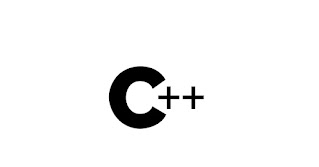Que- Which of the following is the correct syntax of including a user defined header files in C++?
a. #include <userdefined.h>
b. #include <userdefined>
c. #include "userdefined"
d. #include [userdefined]
Answer- #include "userdefined"
Que- Which of the following is a correct identifier in C++?
a. 7var_name
b. 7VARNAME
c. VAR_1234
d. $var_name
Answer- VAR_1234
Que- Which of the following is called address operator?
a. *
b. &
c. _
d. %
Answer- &
Que- Which of the following is used for comments in C++?
a. // comment
b. /* comment */
c. both // comment or /* comment */
d. // comment */
Answer- both // comment or /* comment */
Que- What are the actual parameters in C++?
a. Parameters with which functions are called
b. Parameters which are used in the definition of a function
c. Variables other than passed parameters in a function
d. Variables that are never used in the function
Answer- Parameters with which functions are called
Que- What are the formal parameters in C++?
a. Parameters with which functions are called
b. Parameters which are used in the definition of the function
c. Variables other than passed parameters in a function
d. Variables that are never used in the function
Answer- Parameters which are used in the definition of the function
Que- Which function is used to read a single character from the console in C++?
a. cin.get(ch)
b. getline(ch)
c. read(ch)
d. scanf(ch)
Answer- cin.get(ch)
Que- Which function is used to write a single character to console in C++?
a. cout.put(ch)
b. cout.putline(ch)
c. write(ch)
d. printf(ch)
Answer- cout.put(ch)
Que- What are the escape sequences?
a. Set of characters that convey special meaning in a program
b. Set of characters that whose use are avoided in C++ programs
c. Set of characters that are used in the name of the main function of the program
d. Set of characters that are avoided in cout statements
Answer- Set of characters that convey special meaning in a program
Que- Who created C++?
a. Bjarne Stroustrup
b. Dennis Ritchie
c. Ken Thompson
d. Brian Kernighan
Answer- Bjarne Stroustrup
Que- Which of the following is called insertion/put to operator?
a. <<
b. >>
c. >
d. <
Answer- <<
Que- Which of the following is called insertion/put to operator?
a. <<
b. >>
c. >
d. <
Answer- >>
Que- A language which has the capability to generate new data types are called ________________
a. Extensible
b. Overloaded
c. Encapsulated
d. Reprehensible
Answer- Extensible
Que- Wrapping data and its related functionality into a single entity is known as _____________
a. Abstraction
b. Encapsulation
c. Polymorphism
d. Modularity
Answer- Encapsulation
Que- How structures and classes in C++ differ?
a. Classes follows OOP concepts whereas structure does not
b. In Structures, members are private by default whereas in Classes they are public by default
c. Structures by default hide every member
d. Classes and Structures are the same
Answer- Classes follows OOP concepts whereas structure does not
Que- What does polymorphism in OOPs mean?
a. Concept of allowing overiding of functions
b. Concept of hiding data
c. Concept of keeping things in differnt modules/files
d. Concept of wrapping things into a single unit
Answer- Concept of allowing overiding of functions
Que- Which concept allows you to reuse the written code?
a. Encapsulation
b. Abstraction
c. Inheritance
d. Polymorphism
Answer- Inheritance
Que- Which of the following shows multiple inheritances?
a. A->B->C
b. A->B; A->C
c. A,B->C
d. B->A
Answer- A,B->C
Que- How access specifiers in Class helps in Abstraction?
a. They does not helps in any way
b. They allows us to show only required things to outer world
c. They help in keeping things together
d. Abstraction concept is not used in classes
Answer- They allows us to show only required things to outer world
Que- C++ is ______________
a. procedural programming language
b. object oriented programming language
c. functional programming language
d. both procedural and object oriented programming language
Answer- both procedural and object oriented programming language.

